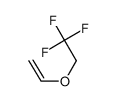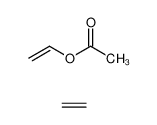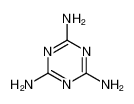| Product name | chloroacetaldehyde |
|---|
| Product number | - |
|---|---|
| Other names | Acetaldehyde,chloro |
| Identified uses | For industry use only. |
|---|---|
| Uses advised against | no data available |
| Company | MOLBASE (Shanghai) Biotechnology Co., Ltd. |
|---|---|
| Address | Floor 4 & 5, Building 12, No. 1001 North Qinzhou Road, Xuhui District, Shanghai, China |
| Telephone | +86(21)64956998 |
| Fax | +86(21)54365166 |
| Emergency phone number | +86-400-6021-666 |
|---|---|
| Service hours | Monday to Friday, 9am-5pm (Standard time zone: UTC/GMT +8 hours). |
Acute toxicity - Oral, Category 3
Acute toxicity - Dermal, Category 3
Skin corrosion, Category 1B
Acute toxicity - Inhalation, Category 2
Carcinogenicity, Category 2
Hazardous to the aquatic environment, short-term (Acute) - Category Acute 1
2.2 GHS label elements, including precautionary statements| Pictogram(s) | 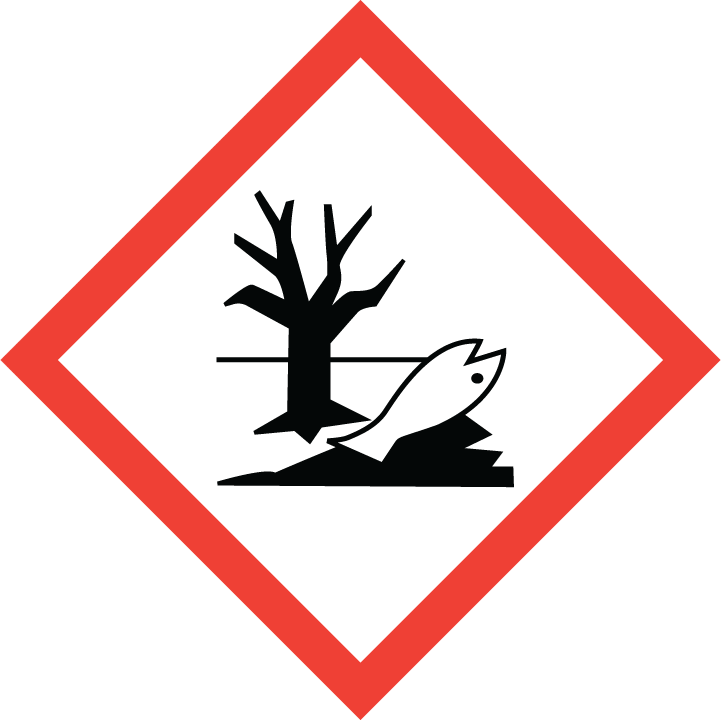 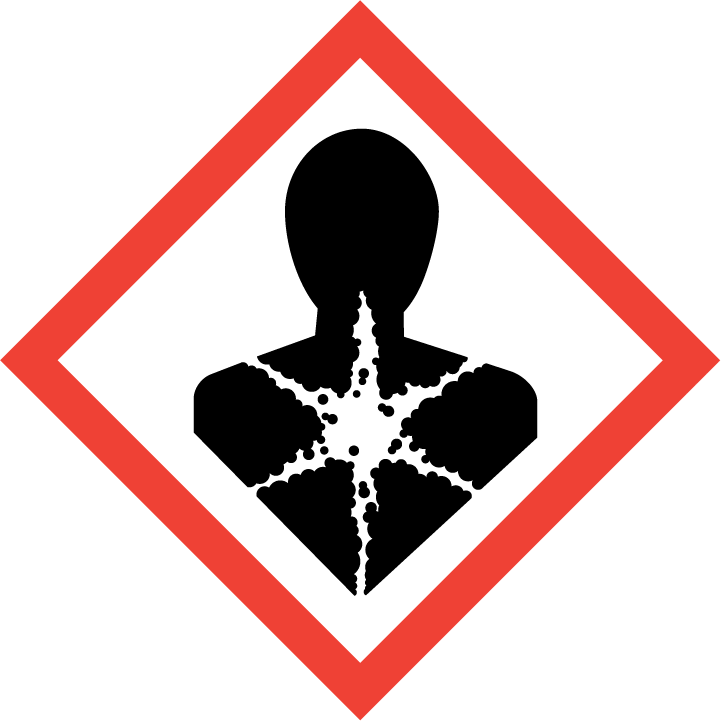 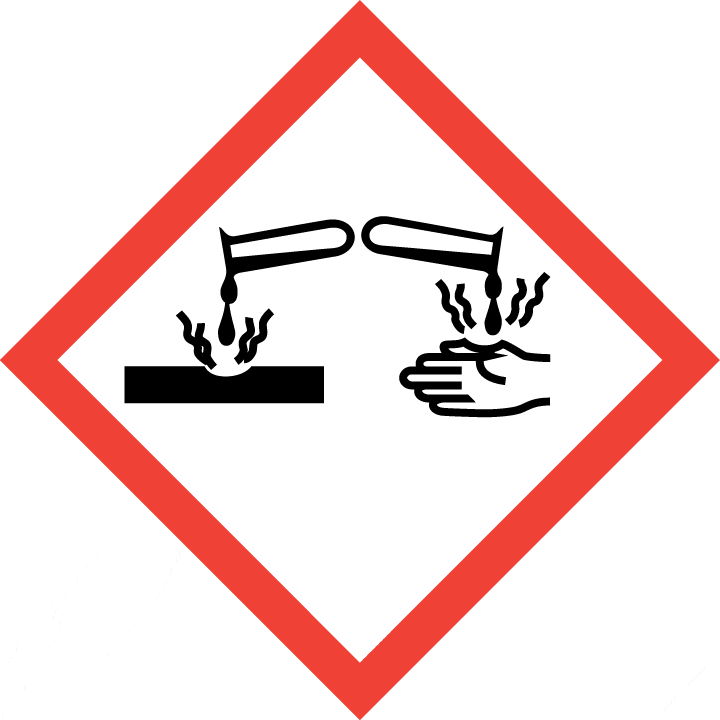  |
|---|---|
| Signal word | Danger |
| Hazard statement(s) | H301 Toxic if swallowed H311 Toxic in contact with skin H314 Causes severe skin burns and eye damage H330 Fatal if inhaled H351 Suspected of causing cancer H400 Very toxic to aquatic life |
| Precautionary statement(s) | |
| Prevention | P264 Wash ... thoroughly after handling. P270 Do not eat, drink or smoke when using this product. P280 Wear protective gloves/protective clothing/eye protection/face protection. P260 Do not breathe dust/fume/gas/mist/vapours/spray. P271 Use only outdoors or in a well-ventilated area. P284 [In case of inadequate ventilation] wear respiratory protection. P201 Obtain special instructions before use. P202 Do not handle until all safety precautions have been read and understood. P273 Avoid release to the environment. |
| Response | P301+P310 IF SWALLOWED: Immediately call a POISON CENTER/doctor/… P321 Specific treatment (see ... on this label). P330 Rinse mouth. P302+P352 IF ON SKIN: Wash with plenty of water/... P312 Call a POISON CENTER/doctor/…if you feel unwell. P361+P364 Take off immediately all contaminated clothing and wash it before reuse. P301+P330+P331 IF SWALLOWED: Rinse mouth. Do NOT induce vomiting. P303+P361+P353 IF ON SKIN (or hair): Take off immediately all contaminated clothing. Rinse skin with water [or shower]. P363 Wash contaminated clothing before reuse. P304+P340 IF INHALED: Remove person to fresh air and keep comfortable for breathing. P310 Immediately call a POISON CENTER/doctor/… P305+P351+P338 IF IN EYES: Rinse cautiously with water for several minutes. Remove contact lenses, if present and easy to do. Continue rinsing. P320 Specific treatment is urgent (see ... on this label). P308+P313 IF exposed or concerned: Get medical advice/ attention. P391 Collect spillage. |
| Storage | P405 Store locked up. P403+P233 Store in a well-ventilated place. Keep container tightly closed. |
| Disposal | P501 Dispose of contents/container to ... |
none
3.Composition/information on ingredients 3.1 Substances| Chemical name | Common names and synonyms | CAS number | EC number | Concentration |
|---|---|---|---|---|
| chloroacetaldehyde | chloroacetaldehyde | 107-20-0 | none | 100% |
Consult a physician. Show this safety data sheet to the doctor in attendance.
If inhaledFresh air, rest. Half-upright position. Artificial respiration may be needed. Refer for medical attention.
In case of skin contactRemove contaminated clothes. Rinse and then wash skin with water and soap. Refer for medical attention .
In case of eye contactFirst rinse with plenty of water for several minutes (remove contact lenses if easily possible), then refer for medical attention.
If swallowedRinse mouth. Do NOT induce vomiting. Refer for medical attention .
4.2 Most important symptoms/effects, acute and delayedPoisonous; may be fatal if inhaled, swallowed or absorbed through the skin. Overexposure causes intense irritation and edema of the eyes, mucous membranes, respiratory tract, and skin. Prolonged exposure causes tissue destruction, chemical burns and residual scarring. The eyes may experience permanent damage. (USCG, 1999)
4.3 Indication of immediate medical attention and special treatment needed, if necessary/SRP:/ Immediate first aid: Ensure that adequate decontamination has been carried out. If patient is not breathing, start artificial respiration, preferably with a demand-valve resuscitator, bag-valve-mask device, or pocket mask, as trained. Perform CPR as necessary. Immediately flush contaminated eyes with gently flowing water. Do not induce vomiting. If vomiting occurs, lean patient forward or place on left side (head-down position, if possible) to maintain an open airway and prevent aspiration. Keep patient quiet and maintain normal body temperature. Obtain medical attention. /Aldehydes and Related Compounds/
5.Fire-fighting measures 5.1 Extinguishing media Suitable extinguishing mediaUse water spray, powder, alcohol-resistant foam, carbon dioxide. /Chloroacetaldehyde (40% Solution)/
5.2 Specific hazards arising from the chemicalSpecial Hazards of Combustion Products: Contain poisonous and irritating chloride gases. Behavior in Fire: May yield highly toxic chloride fumes when heated to decomposition. (USCG, 1999)
5.3 Special protective actions for fire-fightersWear self-contained breathing apparatus for firefighting if necessary.
6.Accidental release measures 6.1 Personal precautions, protective equipment and emergency proceduresUse personal protective equipment. Avoid dust formation. Avoid breathing vapours, mist or gas. Ensure adequate ventilation. Evacuate personnel to safe areas. Avoid breathing dust. For personal protection see section 8.
6.2 Environmental precautionsEvacuate danger area! Consult an expert! Personal protection: complete protective clothing including self-contained breathing apparatus. Ventilation. Collect leaking liquid in sealable containers. Wash away remainder with plenty of water.
6.3 Methods and materials for containment and cleaning upPersonal protection: complete protective clothing including self-contained breathing apparatus. Ventilation. Collect leaking liquid in sealable containers. Wash away remainder with plenty of water. /Chloroacetaldehyde (40% Solution)/
7.Handling and storage 7.1 Precautions for safe handlingAvoid contact with skin and eyes. Avoid formation of dust and aerosols. Avoid exposure - obtain special instructions before use.Provide appropriate exhaust ventilation at places where dust is formed. For precautions see section 2.2.
7.2 Conditions for safe storage, including any incompatibilitiesSeparated from strong oxidants, acids, metals and food and feedstuffs.Safe Storage: Separated from strong oxidants, acids, metals and food and feedstuffs. /Chloroacetaldehyde (40% Solution)/
8.Exposure controls/personal protection 8.1 Control parameters Occupational Exposure limit valuesRecommended Exposure Limit: Ceiling Value: 1 ppm (3 mg/cu m).
Biological limit valuesno data available
8.2 Appropriate engineering controlsHandle in accordance with good industrial hygiene and safety practice. Wash hands before breaks and at the end of workday.
8.3 Individual protection measures, such as personal protective equipment (PPE) Eye/face protectionSafety glasses with side-shields conforming to EN166. Use equipment for eye protection tested and approved under appropriate government standards such as NIOSH (US) or EN 166(EU).
Skin protectionWear impervious clothing. The type of protective equipment must be selected according to the concentration and amount of the dangerous substance at the specific workplace. Handle with gloves. Gloves must be inspected prior to use. Use proper glove removal technique(without touching glove's outer surface) to avoid skin contact with this product. Dispose of contaminated gloves after use in accordance with applicable laws and good laboratory practices. Wash and dry hands. The selected protective gloves have to satisfy the specifications of EU Directive 89/686/EEC and the standard EN 374 derived from it.
Respiratory protectionWear dust mask when handling large quantities.
Thermal hazardsno data available
9.Physical and chemical properties| Physical state | A clear colorless liquid with a pungent odor |
|---|---|
| Colour | Colorless liquid [Note: Typically found as a 40% aqueous solution] |
| Odour | Acrid, penetrating odor |
| Melting point/ freezing point | -5ºC |
| Boiling point or initial boiling point and boiling range | 80-100ºC(lit.) |
| Flammability | Class IIIA Combustible Liquid: Fl.P. at or above 60°C and below 93.33°C.Combustible. Gives off irritating or toxic fumes (or gases) in a fire. |
| Lower and upper explosion limit / flammability limit | no data available |
| Flash point | 62ºC |
| Auto-ignition temperature | 88°C |
| Decomposition temperature | no data available |
| pH | no data available |
| Kinematic viscosity | no data available |
| Solubility | greater than or equal to 100 mg/mL at 18.89°C |
| Partition coefficient n-octanol/water (log value) | log Kow = 0.09 (est) |
| Vapour pressure | 70.6mmHg at 25°C |
| Density and/or relative density | 1.236 |
| Relative vapour density | 2.7 (40% aqueous solution) (Relative to Air) |
| Particle characteristics | no data available |
no data available
10.2 Chemical stabilityThe anhydrous substance polymerizes on standing, but reverts to the monomer on distillation.
10.3 Possibility of hazardous reactionsMODERATE, WHEN EXPOSED TO HEAT OR FLAMEThe vapour is heavier than air.2-CHLOROETHANAL polymerizes on standing. At greater than 50% concentration in water, it forms an insoluble hemihydrate. Sensitive to heat. Reacts with oxidizing agents. Incompatible with acids and water . Burns to give poisonous and irritating gases.
10.4 Conditions to avoidno data available
10.5 Incompatible materialsOxidizers, acids.
10.6 Hazardous decomposition productsWhen heated to decomposition it emits toxic fumes of /hydrogen chloride/.
11.Toxicological information Acute toxicity- Oral: LD50 Mouse oral 21.0 mg/kg
- Inhalation: no data available
- Dermal: no data available
no data available
Serious eye damage/irritationno data available
Respiratory or skin sensitizationno data available
Germ cell mutagenicityno data available
Carcinogenicityno data available
Reproductive toxicityno data available
STOT-single exposureno data available
STOT-repeated exposureno data available
Aspiration hazardno data available
12.Ecological information 12.1 Toxicity- Toxicity to fish: no data available
- Toxicity to daphnia and other aquatic invertebrates: EC50; Species: Daphnia magna (Water Flea) age < or =24 hr; Conditions: freshwater, static, 25°C, pH > or = 7.0, dissolved oxygen > or =58%; Concentration: 15000 ug/L for 24 hr; Effect: intoxication, immobilization /50% purity formulation
- Toxicity to algae: EC50; Species: Scenedesmus subspicatus (Green Algae) exponential growth phase; Conditions: freshwater, static, 24°C, pH 8.0-9.3; Concentration: 550 ug/L for 48 hr; Effect: decreased population biomass /50% purity formulation
- Toxicity to microorganisms: no data available
PURE CULTURE: Pseudomonas CE1r, isolated from soil, degraded 2-chloroethanol via 2-chloroacetaldehyde and 2-chloroacetate to glycollic acid(1).
12.3 Bioaccumulative potentialAn estimated BCF of 3 was calculated in fish for chloroacetaldehyde(SRC), using an estimated log Kow of 0.09(1) and a regression-derived equation(1). According to a classification scheme(2), this BCF suggests the potential for bioconcentration in aquatic organisms is low(SRC).
12.4 Mobility in soilUsing a structure estimation method based on molecular connectivity indices(1), the Koc of chloroacetaldehyde can be estimated to be 1(SRC). According to a classification scheme(2), this estimated Koc value suggests that chloroacetaldehyde is expected to have very high mobility in soil.
12.5 Other adverse effectsno data available
13.Disposal considerations 13.1 Disposal methods ProductThe material can be disposed of by removal to a licensed chemical destruction plant or by controlled incineration with flue gas scrubbing. Do not contaminate water, foodstuffs, feed or seed by storage or disposal. Do not discharge to sewer systems.
Contaminated packagingContainers can be triply rinsed (or equivalent) and offered for recycling or reconditioning. Alternatively, the packaging can be punctured to make it unusable for other purposes and then be disposed of in a sanitary landfill. Controlled incineration with flue gas scrubbing is possible for combustible packaging materials.
14.Transport information 14.1 UN Number| ADR/RID: UN2232 | IMDG: UN2232 | IATA: UN2232 |
| ADR/RID: 2-CHLOROETHANAL |
| IMDG: 2-CHLOROETHANAL |
| IATA: 2-CHLOROETHANAL |
| ADR/RID: 6.1 | IMDG: 6.1 | IATA: 6.1 |
| ADR/RID: I | IMDG: I | IATA: I |
| ADR/RID: yes | IMDG: yes | IATA: yes |
no data available
14.7 Transport in bulk according to Annex II of MARPOL 73/78 and the IBC Codeno data available
15.Regulatory information 15.1 Safety, health and environmental regulations specific for the product in question| Chemical name | Common names and synonyms | CAS number | EC number |
|---|---|---|---|
| chloroacetaldehyde | chloroacetaldehyde | 107-20-0 | none |
| European Inventory of Existing Commercial Chemical Substances (EINECS) | Listed. | ||
| EC Inventory | Listed. | ||
| United States Toxic Substances Control Act (TSCA) Inventory | Listed. | ||
| China Catalog of Hazardous chemicals 2015 | Listed. | ||
| New Zealand Inventory of Chemicals (NZIoC) | Listed. | ||
| Philippines Inventory of Chemicals and Chemical Substances (PICCS) | Listed. | ||
| Vietnam National Chemical Inventory | Not Listed. | ||
| Chinese Chemical Inventory of Existing Chemical Substances (China IECSC) | Listed. | ||
| Creation Date | Aug 19, 2017 |
|---|---|
| Revision Date | Aug 19, 2017 |
- CAS: Chemical Abstracts Service
- ADR: European Agreement concerning the International Carriage of Dangerous Goods by Road
- RID: Regulation concerning the International Carriage of Dangerous Goods by Rail
- IMDG: International Maritime Dangerous Goods
- IATA: International Air Transportation Association
- TWA: Time Weighted Average
- STEL: Short term exposure limit
- LC50: Lethal Concentration 50%
- LD50: Lethal Dose 50%
- EC50: Effective Concentration 50%
- IPCS - The International Chemical Safety Cards (ICSC), website: http://www.ilo.org/dyn/icsc/showcard.home
- HSDB - Hazardous Substances Data Bank, website: https://toxnet.nlm.nih.gov/newtoxnet/hsdb.htm
- IARC - International Agency for Research on Cancer, website: http://www.iarc.fr/
- eChemPortal - The Global Portal to Information on Chemical Substances by OECD, website: http://www.echemportal.org/echemportal/index?pageID=0&request_locale=en
- CAMEO Chemicals, website: http://cameochemicals.noaa.gov/search/simple
- ChemIDplus, website: http://chem.sis.nlm.nih.gov/chemidplus/chemidlite.jsp
- ERG - Emergency Response Guidebook by U.S. Department of Transportation, website: http://www.phmsa.dot.gov/hazmat/library/erg
- Germany GESTIS-database on hazard substance, website: http://www.dguv.de/ifa/gestis/gestis-stoffdatenbank/index-2.jsp
- ECHA - European Chemicals Agency, website: https://echa.europa.eu/






